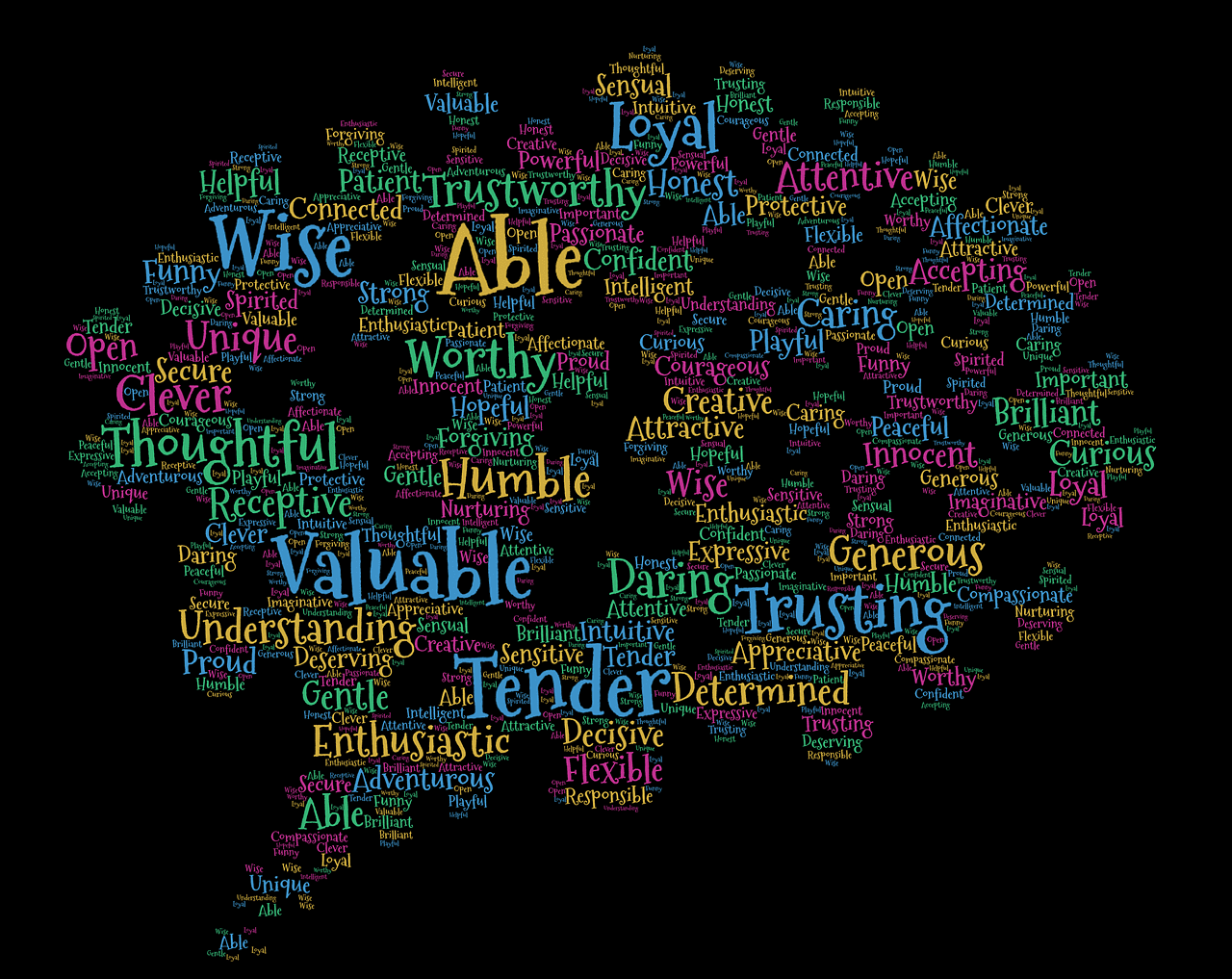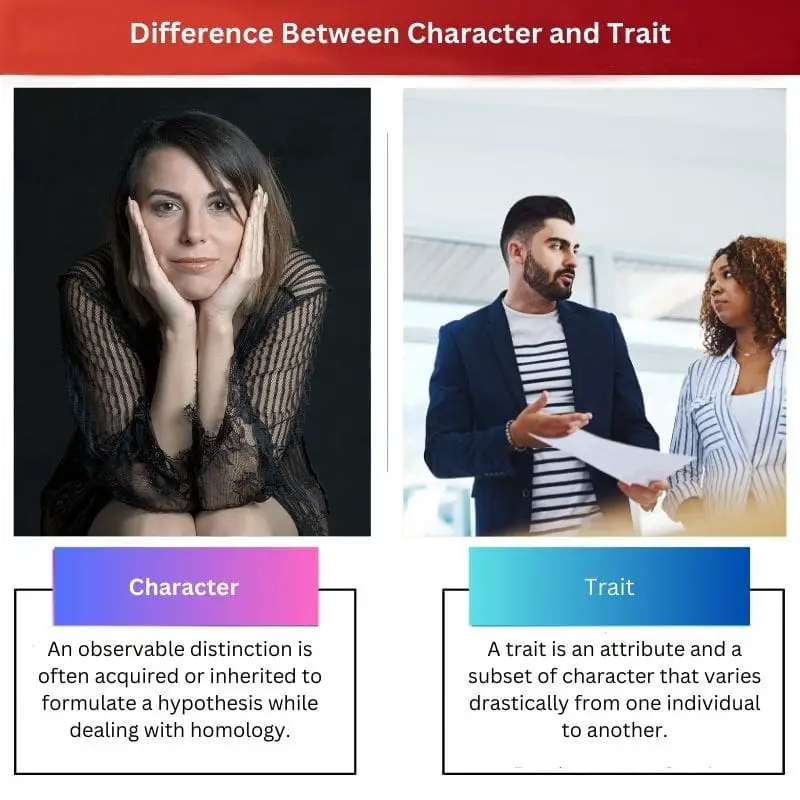An organism’s body is an outcome of fascinating multicellular activities, be it an ant or a mammal as giant as an elephant; the basic process of existing and passing on genes remains the same in the progeny.
The world comprises billions of species, the number is so high, and the overwhelming thing remains that each species is completely different. Humankind is one of them, which differs from each other, excluding the look-alikes or twins who are also not completely the same.
The morphological difference and the anatomical variations result from the evolutionary process. The difference in the structure, the colour of eyes, or hair, everything is so well coded to show a different trait.
Character and trait are interchangeably used to define similarities or differences. A person’s character is the building block of personality, and the traits add up to that to create a unique identity.
Key Takeaways
- A character refers to a person in a story, while a trait refers to a specific quality or characteristic of a person or thing.
- Characters are developed through their actions, thoughts, and dialogue, while traits are innate qualities that define a person or thing.
- Characters are used in literature, theatre, and film to tell a story, while traits describe individuals or things in everyday life.
Character vs Trait
Character refers to a person’s moral and ethical values, including beliefs, attitudes, and behaviours, encompassing honesty and integrity. Traits are inherent features of an individual’s personality, such as temperament, emotional tendencies, and cognitive patterns.

Comparison Table
| Parameter of Comparison | Character | Trait |
|---|---|---|
| Definition | An observable distinction is acquired or inherited to formulate a hypothesis while dealing with homology. | A trait is an attribute and a subset of a character that varies drastically from one individual to another. |
| Influence | It can be acquired or inherited, meaning the external environment can bring up changes and influence them. | A trait cannot be influenced by the external environment as it’s a gene-to-gene interaction. |
| Dominant/Recessive | Character is neither dominant nor recessive. | The dominant gene expresses a trait, while the recessive gene sits back. |
| Determination | Characters can help to identify a group of organisms falling under the same family. | They help to identify a single individual from the. Billions exi arresting as they are unique. |
| Example | The fact that eyes have colour pigments is a characteristic. | Each eye consists of a different pigment which leads to different colours, a trait. |
What is Character?
Character is a feature obtained after the genetic process and a result of external factors that affect it. It can be inherited or acquired. An inherited character is a result of the transfer of genes from parents to the progeny; the parents’ features are likely to show up,
The acquired characteristics are the changes adopted by the body with the advancements or the evolutionary process, for example, the much-discussed Giraffe neck or the ear lobes of humans.
A single gene can affect and determine several characters, and the contrary is true as well, where various genes work to determine one of the characters. Oligogenic character is one where just one or a few genes form the character, for example, the blood groups A, B, AB, and O.
Polymeric character is where more numbers of genes work together to determine the type, skin colour, height, etc. requires more genes to form one character.

What is a Trait?
A trait is the distinction of an individual from a crowd of similar beings. It creates identity by giving a different element that is recognizable. Traits move from one generation to the other in a family. It is completely inherited and is not affected by the outside environment.
Two traits are carried simultaneously ( two genes represent two different traits). One gene is dominant, whereas the other is termed recessive.
A dominant Trait is the one that ultimately appears in an individual. In contrast, a recessive trait is weak, remains unexpressed, and the probability of it being a dominant trait remains in future generations.
For example, one parent might have brown eyes, and the other parent with blue eyes; both are genes for the colour of eyes; in the offspring, one amongst both will show up, and the chances can be of both, but the one with dominance will appear.

Main Difference Between Character and Trait
- The main difference between Character and Trait is that a Character is a definite quality or characteristic feature that separates or unites a vast population of organisms existing, whereas a trait is specific to an individual; it creates identity.
- A character is highly influenced by the environment and also by one heredity. Some characters acquire time to cope with the evolutionary process, while others are inherited. A trait, however, is completely inherited, and it shows up time by time in the generations.
- There is nothing like a dominant or recessive trait, whereas the final expression of a trait is an outcome of the dominance of a gene,
- A group of organisms falling under the same set can be categorized with characters. Traits are specific to a person and lead to the creation of wonders.
- The existence of various colour types of skin or eyes is the characters, while the specific brown skin, blue eyes, etc., fall under traits.




